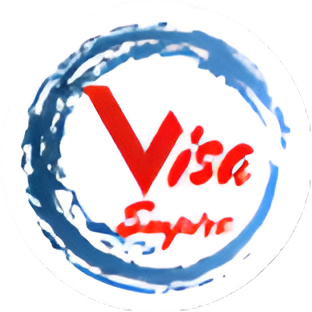Australia PR Options for Child Care Workers & Teachers

Australia’s childcare sector is booming. With the growing demand for qualified professionals, many migrants are having the same question and that question is “Can working in a childcare centre help me secure Permanent Residency (PR) in Australia?”
The answer to it is YES. However, the pathway to it depends on your role, qualifications, and experience. Whether you’re a child care worker, an early childhood teacher (ECT), or even a centre manager, there are numerous visa options available.
In this guide, we’ll break down the different PR pathways for childcare professionals. We will also explain the challenges you might face, and highlight the opportunities that could open doors to your Australian dream.
Why Australia Needs Child Care Professionals
Child care and early childhood education are considered essential services in Australia. With growing demand from families and a shortage of skilled workers, the Australian Government has placed roles (such as child care workers and early childhood teachers) on its skilled occupation lists.
This implies that migrants with the right skills and experience not only have job security but also a stronger chance of securing permanent residency.
Pathway 1: Permanent Residency for Child Care Workers
Numerous migrants start their journey as child care workers in Australia. In order to be eligible for sponsorship, you typically need the following:-
- A relevant qualification (such as Certificate III or Diploma in Early Childhood Education and Care), and
- At least 1 year of full-time work experience (or the part-time equivalent).
This experience can be:
- 1 year full-time,
- 2 years part-time, or
- Equivalent casual work (if consistent and verifiable).
With these requirements, you may be able to apply for the Temporary Skill Shortage (subclass 482 visa), provided you have an Australian employer willing to sponsor you.
The Biggest Challenge: TSMIT Salary Threshold
The main hurdle for child care workers is meeting the Temporary Skilled Migration Income Threshold (TSMIT). Currently, the TSMIT is $76,515 + superannuation.
For many child care centres, paying this salary is not financially viable. This creates a bottleneck for sponsorship.
Upcoming Migration Changes for Care Workers
Recognising this issue, the Australian Government’s Migration Strategy has proposed updates specifically for essential care workers (including child care and aged care staff).
If implemented, the TSMIT may be reduced to $53,900, making sponsorship much more achievable. While these changes were initially flagged for December 2025, there is no confirmed timeline yet.
If and when introduced, this would be a game-changer for both employers and migrant workers.
Pathway 2: Permanent Residency for Early Childhood Teachers (ECTs)
If you’ve completed a Graduate Diploma in Early Childhood Teaching (or equivalent), your PR opportunities are much broader compared to child care workers.
As an ECT, you can apply for a wide range of visas. Those include:
- Subclass 189- Skilled Independent Visa
- Subclass 190- Skilled Nominated Visa
- Subclass 491- Skilled Work Regional Visa
- Subclass 482- Temporary Skill Shortage Visa
- Subclass 186- Employer Nomination Scheme Visa
Why ECTs Have Stronger Pathways
Early Childhood Teachers are listed on almost every skilled occupation list. It means:
- You don’t always need an employer to sponsor you.
- With strong points (such as age, English ability, and work experience), you may qualify for PR independently through visas like the 189, 190, or 491.
- You have both employer-sponsored and independent PR options. This provides you with more flexibility and security.
Pathway 3: Permanent Residency for Child Care Centre Managers
If you’ve progressed into a management role, such as a child care centre manager, your PR pathways also expand.
These roles usually require higher qualifications (such as a bachelor’s degree in early childhood education or management) and substantial industry experience. However, the advantage is that these positions are considered senior-skilled roles. This makes PR pathways much stronger under visas like the 186 (ENS) or skilled migration streams.
Key Takeaways
- Child Care Workers can pursue PR through the 482 visa after one year of experience, but face challenges due to high TSMIT requirements. Future changes may reduce the income threshold, creating more opportunities.
- Early Childhood Teachers (ECTs) enjoy broader and stronger PR pathways through visas like the 189, 190, 491, 482, and 186. Independent skilled migration is often possible.
- Child Care Centre Managers having higher qualifications and leadership experience have strong PR options available.
Need Help With Your PR Pathway?
At Visa Empire, we’ve helped countless childcare professionals take the right steps towards permanent residency in Australia. Whether you’re working as a child care worker, early childhood teacher, or centre manager, our team can:
- Assess your current eligibility
- Guide you on the best PR pathway for your situation
- Support you throughout the sponsorship and visa application process
Contact Visa Empire today and take the first step towards your Australian PR journey with confidence.
Frequently Asked Questions (FAQs)
1. How to get a PR in early childhood education in Australia?
To get permanent residency (PR) in early childhood education, you need to meet the qualification and experience requirements set by the Australian Government. Most early childhood teachers apply through skilled migration visas such as the Subclass 189 (Skilled Independent Visa), Subclass 190 (Skilled Nominated Visa), or Subclass 491 (Skilled Work Regional Visa).
If you prefer employer sponsorship, you may also qualify through the Subclass 482 (Temporary Skill Shortage Visa) or the Subclass 186 (Employer Nomination Scheme Visa). The right pathway depends on your qualifications, English test scores, and work experience.
2. Is early childhood education in demand in Australia for PR?
Yes, early childhood education is highly in demand in Australia. With a growing population and increased demand for quality child care services, early childhood teachers are consistently listed on Australia’s skilled occupation lists. This makes them one of the most sought-after professions for PR opportunities.
3. Is there a PR pathway for early childhood educators?
Absolutely. Early childhood educators, including both child care workers and teachers, have clear PR pathways. While child care workers often rely on employer sponsorship (such as the 482 visa), early childhood teachers have broader options, including independent skilled visas like the 189, 190, or 491.
In many cases, early childhood educators can achieve PR without needing an employer sponsor. This is possible as long as they score enough points in the skilled migration system.
4. Is early childhood education in demand in Australia?
Yes. Early childhood education is not only in demand for PR purposes but also across the wider Australian workforce. The government has recognised child care and early education as essential services, and the shortage of skilled professionals is expected to continue for years. This strong demand makes the profession more secure and attractive for migrants seeking long-term opportunities.
5. What qualifications do I need to be an early childhood teacher in Australia?
To work as an early childhood teacher (ECT) in Australia, you typically need a Bachelor of Early Childhood Education or a Graduate Diploma in Early Childhood Teaching (or an equivalent qualification recognised by the Australian Children’s Education & Care Quality Authority- ACECQA).
You’ll also need to meet English language proficiency requirements. In some states, holding additional clearances (such as a Working With Children Check) can also be a requirement.



